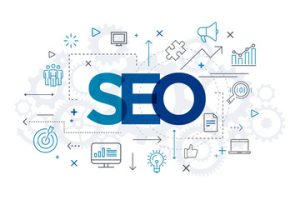SEO in Boise is a cost-effective way to attract traffic without spending on expensive advertising campaigns. It involves optimizing various digital assets like website content, campaign landing pages, and blog posts to improve search engine visibility and discoverability.

Content reigns supreme when it comes to SEO, and ensuring that your site’s content meets user search queries is the top priority. There are also technical SEO considerations, such as optimizing html structures, improving page load speed, implementing XML sitemaps, and using structured data.
Keywords are the foundation of any SEO campaign. They define what users are searching for and connect their needs with businesses that can help fulfill them. By understanding how keywords work and using them effectively, you can improve your search engine rankings and drive meaningful traffic to your website.
There are a number of factors that must be considered when choosing SEO keywords. Firstly, you need to make sure that the keywords are relevant to your content and business. Secondly, you need to consider the competition. A good way to do this is to visit your competitors’ websites, forums and social media pages to see which keywords they are using. This will give you a clue as to which keywords are working best for them and can serve as an inspiration for your own keyword strategy.
Another factor to consider is the search volume of the keywords. You want to choose keywords that are popular enough to generate traffic, but not so popular that they’re saturated by competing brands. You can use tools like Google Trends to determine the popularity of different keywords. Finally, you need to consider how long it will take to rank for the keywords you’re targeting. This will affect the amount of time and effort you need to invest in your campaign.
Once you’ve selected your keywords, it’s time to start creating and publishing content. Creating content around your keywords will help you increase your search engine visibility and improve your organic rankings. However, it’s important to remember that SEO is an ongoing process and you should always be reviewing and updating your keywords as search patterns change and user behavior evolves.
In addition to generating traffic, keywords also help you organize your website and keep it organised. Having a clear structure makes it easier for search engines to crawl and index your site. This is especially helpful when you’re managing a large website with thousands of pages and posts. By implementing keyword clusters and long-tail keywords, you can better organize your content and ensure that it’s properly optimized for search engines.
Content
Unique content is an important element of SEO because it helps distinguish your online brand from competitors, engages your audience, and drives organic search traffic. However, it is important to keep in mind that simply having original and valuable information doesn’t guarantee higher SEO rankings. You must also ensure that your content adheres to SEO best practices and stays relevant.
Aside from the content itself, there are many other factors that influence your website’s SEO performance, including keyword usage, on-page optimization, and user engagement. These elements help search engines assess the relevance of your content and determine how well it matches user intent. Using these factors to your advantage will help you improve your website’s SEO performance and increase your chances of appearing on the first page of search engine results pages (SERPs).
Creating unique, quality content is essential to optimizing your website for SEO. Aside from being unique, your content should be well-structured and informative. It should also be organized into content clusters based on related topics. This allows search engines to find and evaluate your content more easily, while providing a better user experience. Additionally, you should be sure to link to your other pages on the same topic to reinforce your authority and establish a strong content structure.
Search engine algorithms have become increasingly sophisticated and can understand the context, synonyms, and related terms in a given search query. In addition, they can identify whether the search query is transactional, navigational, or informational. Therefore, it’s crucial to consider user intent when creating your content.
To ensure that your content is relevant, you need to focus on the keywords and user intent. While it is still important to use keywords in your content, you should avoid over-stuffing them. Instead, try to write content that answers questions, provides useful information, or solves problems for your target audience. It is also a good idea to include images and videos to improve your content’s relevance.
One of the most effective ways to improve your content’s SEO is by implementing a featured snippet strategy. A featured snippet is a short text excerpt that appears in the search engine result page (SERP) above the standard listing of results. Including a targeted keyword in the snippet increases its chances of ranking high in SERPs and attracting organic search traffic.
Link building
Link building is one of the most important parts of SEO. It helps search engines understand the relevance and authority of a website. It also helps them provide the most relevant results to users. As such, it is vital for achieving high rankings in search engine result pages. A strong link profile can increase the number of organic visits and ultimately drive more leads. It also improves brand awareness and increases trust among consumers.
While it is not the only factor in SEO, it plays an important role in determining your search engine ranking. Search engines look at the quality of a website’s content and its ability to satisfy user intent when assessing a site’s authority. In order to achieve this, you should create a strategy that focuses on attracting quality backlinks from reputable websites. This will help your content rank well for specific keywords, as well as improve the overall SEO performance of your website.
In addition to focusing on quality, you should also ensure that your link building efforts are natural. This means avoiding link schemes that involve buying links or using other manipulative tactics (known as black-hat SEO). These techniques can lead to Google penalties, which will lower your search engine ranking.
It is also advisable to focus on building links from websites that are related to your niche or industry. For example, if you’re in the fitness industry, it’s best to build links from fitness blogs. Similarly, if you’re an attorney, it’s a good idea to build links from law blogs. This will help you get a better ranking in your specific industry.
You should also make sure that your content is relevant to the websites you’re trying to attract. This will help you get higher search engine ranking and attract more traffic. It is also a good idea to track your rankings on a regular basis. This will allow you to monitor the progress of your campaign and determine if it is working.
Finally, it’s a good idea to use a tool like Moz or Ahrefs to evaluate the quality of your links. Both of these tools can be used to identify low-quality links and remove them from your website.
Analytics
SEO analytics is the process of monitoring and analyzing data to uncover insights that can be used to improve website performance. It helps SEOs understand how search engine algorithms affect site traffic and identify opportunities for improving their website’s organic visibility. This can be done by creating keyword-based reports, examining the structure of a website, or evaluating competitor websites to identify gaps in content, backlinks, and technical aspects that could hinder a business’s organic rankings.
The right SEO analytics tools should provide clear, actionable insights that are easily digestible for non-technical users. They should also provide the ability to track and compare key SEO metrics over time, offering context that is essential for making informed SEO decisions. For example, when a client’s organic traffic suddenly drops, an agency can quickly determine whether it is due to an algorithm update, increased competition, or on-page SEO issues.
An effective SEO strategy requires ongoing monitoring and analysis to make changes that will impact the bottom line. The right analytics tool will help you achieve your goals by delivering insights that drive optimization efforts and lead to better results. This will not only improve your website’s organic search visibility, but it will also boost conversion rates and boost brand awareness.
A good SEO analytics process starts with defining the objectives of your campaign. Identify the keywords that are most important to your business and set realistic goals for your website. This will help you focus your marketing efforts and ensure that you are getting the most out of your budget.
Another useful feature of Google Analytics is the ability to track user behavior. For example, you can use the Content Explorer report to understand what types of content are most appealing to visitors and how users interact with them. This can help you create more engaging, engaging content that will increase your website’s organic visibility.
The latest version of Google Analytics, GA4, is a powerful tool for assessing the effectiveness of your website’s SEO strategies. It offers advanced tracking capabilities and machine learning-powered insights. It also includes a new reporting interface that allows you to view and analyse your data with ease. In addition, you can use a beta feature called Data Studio Explorer to quickly perform a one-off analysis of your data.

